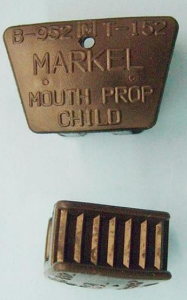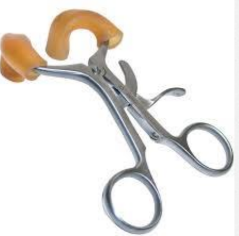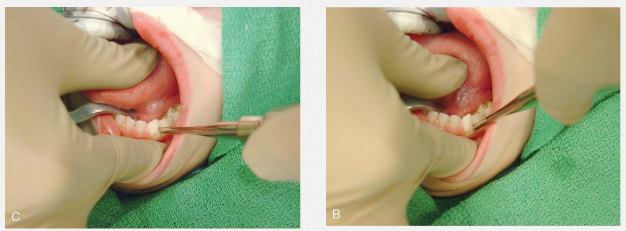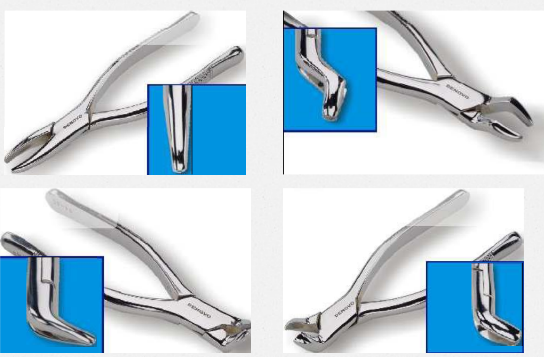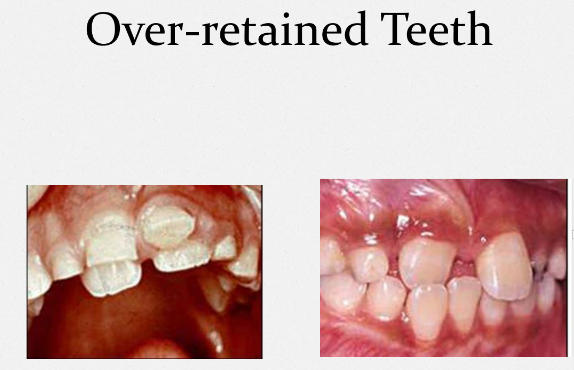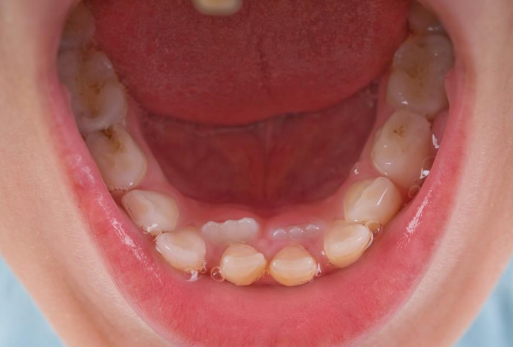Pediatric Oral Surgery 2019
Introduction
Diagnosis
Med history, x-rays
Assess ability to cooperate
General principles ~ to adult
Profound anesthesia, aseptic technique, visibility and surgical site stability, protect airway
Equipment Used
McKesson Bite Block
Degree of opening controlled by size selected and placement
Attach floss and knot
Molt Mouth Prop
Utilizes a ratchet-type mechanism
Prevents iatrogenic (treatment-induced) injury to the patient
Indications for Simple Exodontia
Nonrestorable teeth
Fracture of crown/root
Prolonged retention due to improper root resorption or ankylosis
Impacted teeth
Supernumerary teeth
Caveats
Concepts that may dictate modifications
Proximity of primary tooth to succedaneous tooth
Roots on primary teeth with nonresorbed roots will be long and slender
Steps for Tooth Extraction
Preparation
Place gauze screen
Separate attachment
Elevation - concave blade placed against tooth being extracted
Elevation Technique
Elevator turned so that the blade resting on alveolus acts as a fulcrum & coronal part of blade rotates toward tooth being extracted.
Forceps Extraction
Beaks should adapt of root surface
Beaks should be parallel to long axis
Size of beaks should not impinge on adjacent teeth
Pediatric Forceps
These stainless steel forceps are designed especially for use with primary teeth.
Beak & handle are accurately proportioned
Forceps can be hidden in the palm, reducing patient stress
Allows greater field of view in child’s mouth
5 different forceps are available
Cowhorn’s are contraindicated in primary exodontia
Universal Pediatric Forceps
150s and 151s
Denovo Dental
Exodontia Technique
First force is apical
Apical center of rotation decreases the translational movement of the root
Decreased root fracture
Disrupts PDL
Tooth is SLOWLY luxated to buccal/lingual
Movement is in one direction & then stopped allowing the alveolus to expand
With each movement force is increased causing expansion of alveolus
May position opposite hand so that thumb or index finger can feel expansion
Finally slight coronal traction forces are applied
Extraction Techniques
Maxillary and Mandibular Anterior Teeth
Accomplished with a rotational movement due to conical single roots
Care must be taken not to loosen adjacent teeth
Erupted Maxillary and Mandibular Molars
Complications
Root fracture not uncommon
Inadvertent extraction or dislocation of succedaneous tooth
Technique
slow palatal/lingual and buccal force to expand the alveolar bone
Support mandible to protect TMJ
Consider sectioning when primary molar roots encirle the successor's crown
Fractured Primary Tooth Roots
Inform perform you perform
Dilemma: removing root tip may damage permanent tooth, while leaving may cause infection, delay or deflect permanent tooth eruption
Rule of thumb:
if tooth root is easily removed do it
if tooth root is very small, deep in the socket, close to permanent successor, or unable to remove after several attempts let it be
Ankylosis
Periodic monitoring for timing of extraction if space loss, supereruption
Wait too long results in tipping of adjacent teeth and creating a difficult extraction
Show no signs of mobility despite amount of root present and exhibit a distinctive sound when percussed
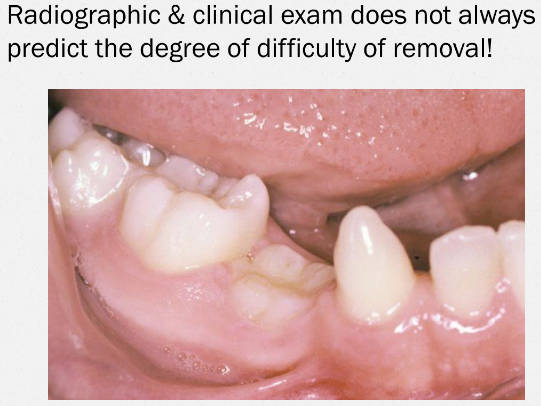
Standard of Care
Timing to optimize health and minimize risks
Optimal bone healing with improvement of intrabony defects on 2nd molars occurs when surgery is done on individuals less than 25 years of age
Associated risks of surgery have been shown to be greater in individuals 25 years and older
Other Impactions
Most common is 3rd molar
Maxillary canine > second premolar > mandibular second molar > maxillary incisors
Impactions of primary teeth associated with patholory
Supernumerary teeth
Odontomas
seen frequently
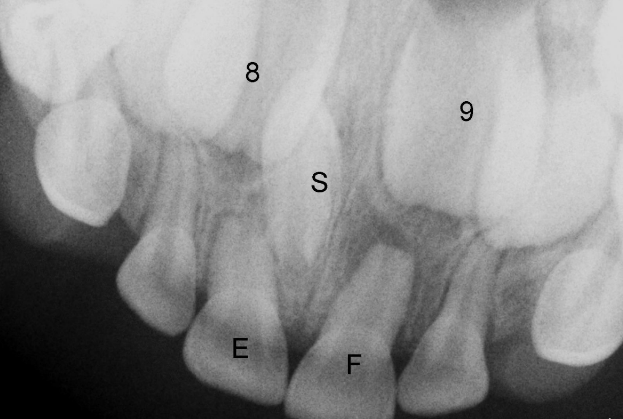
Soft Tissue Lesions
Mucoceles
Ranulas
Fibromas
Pyogenic Granulomas
